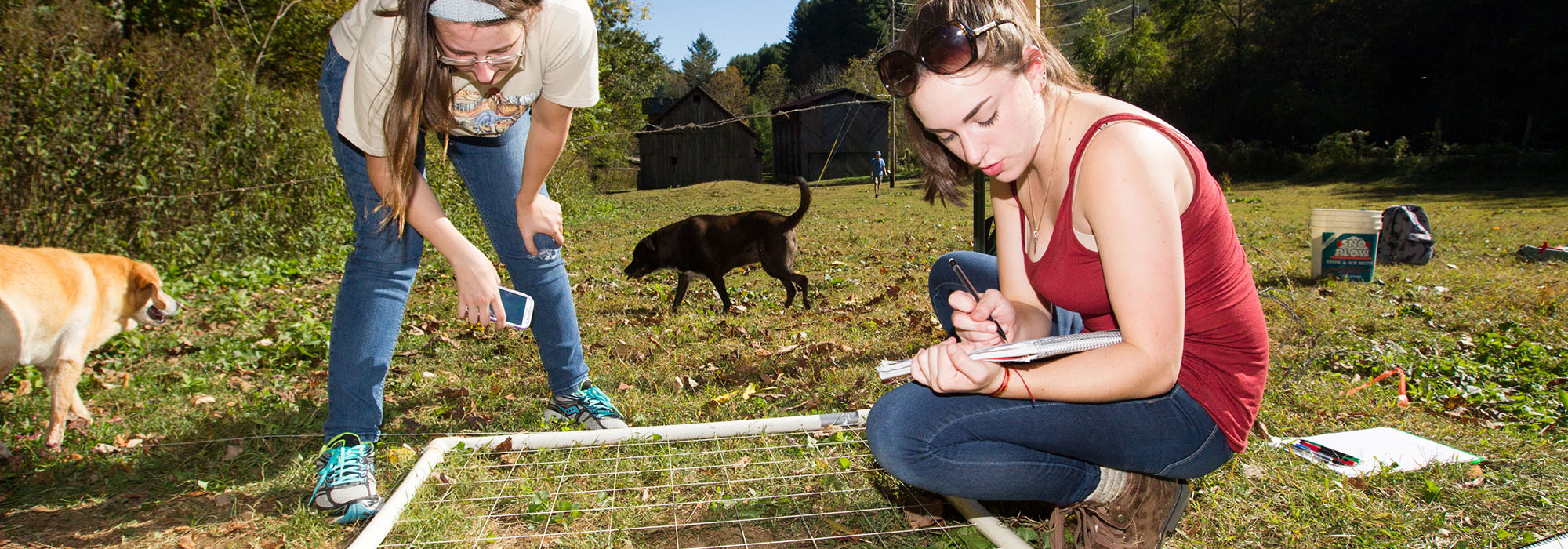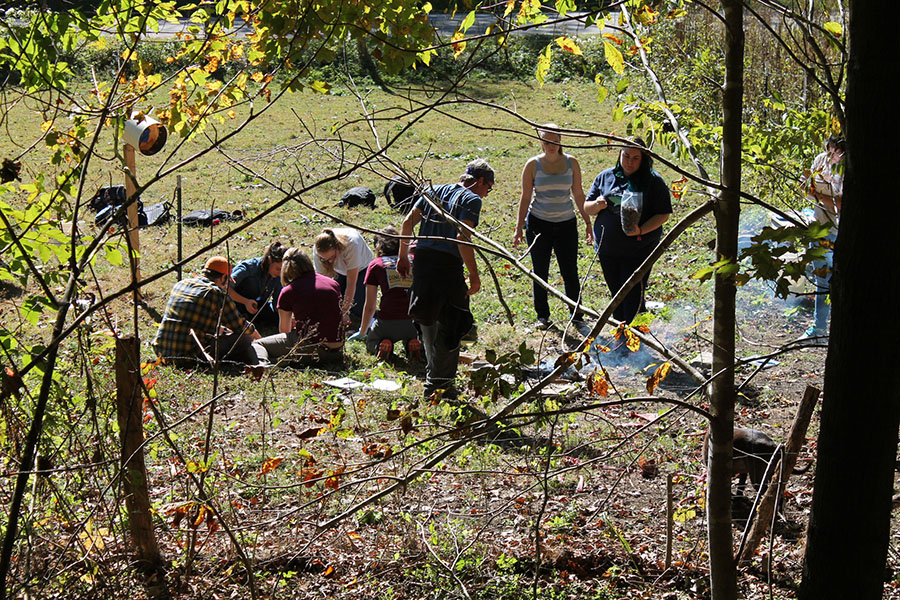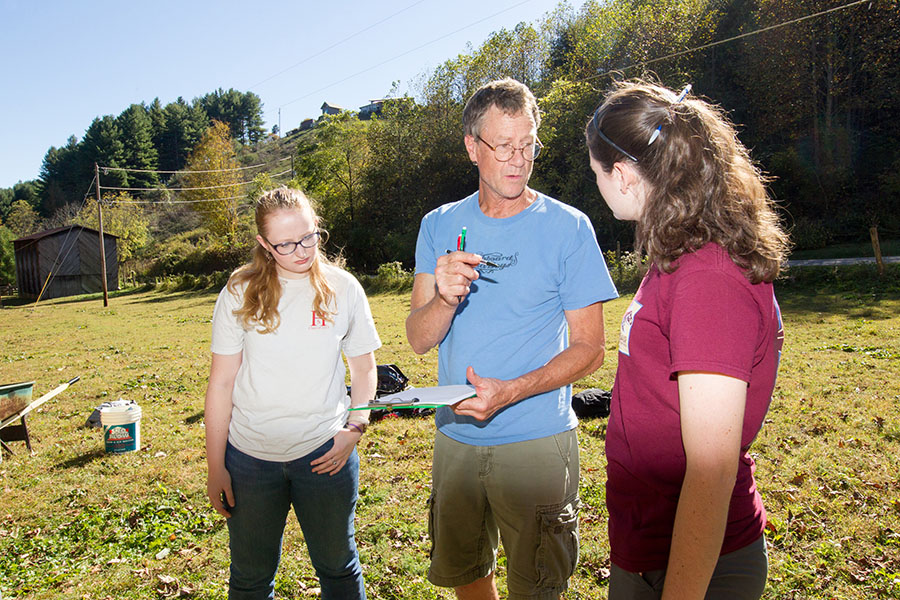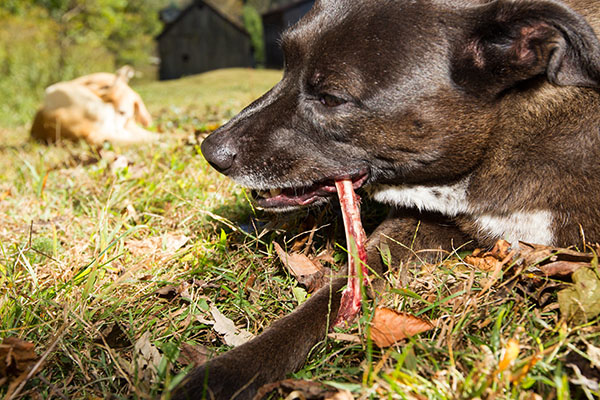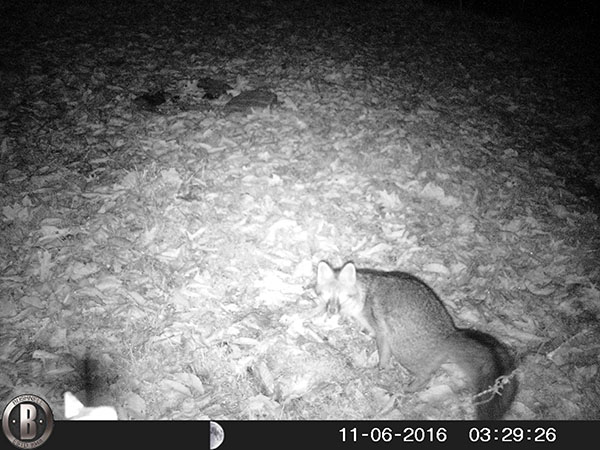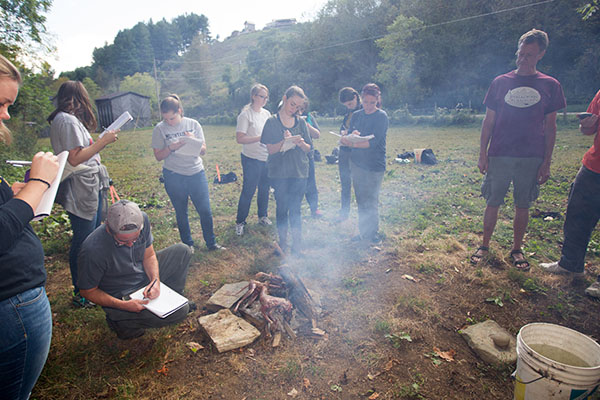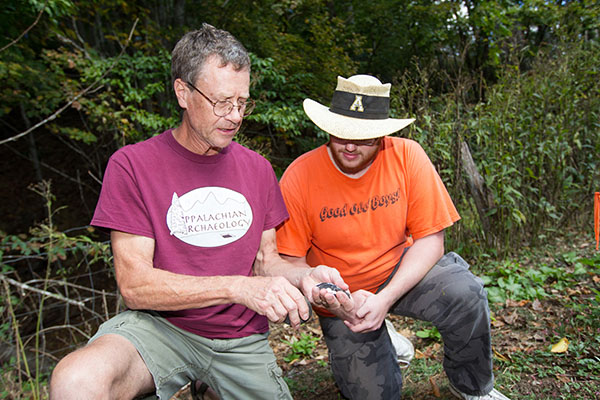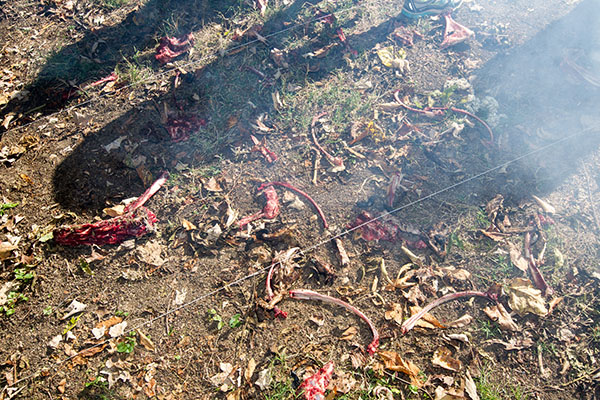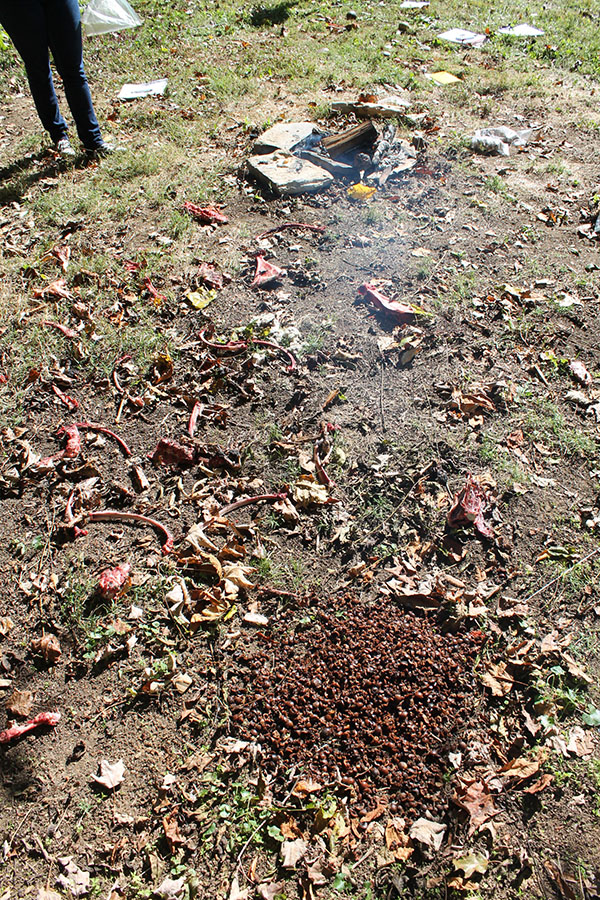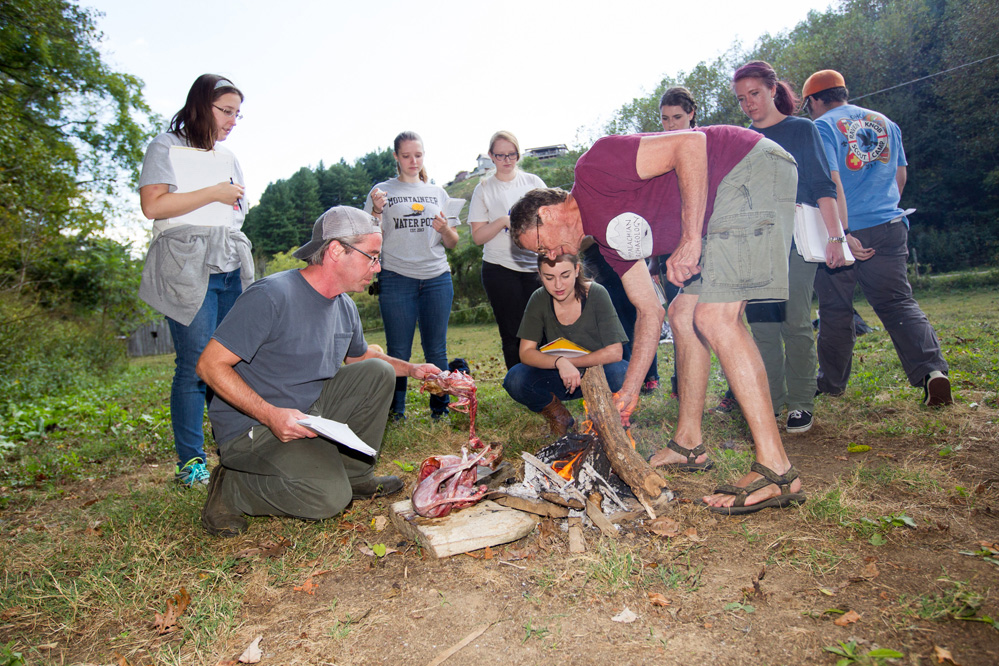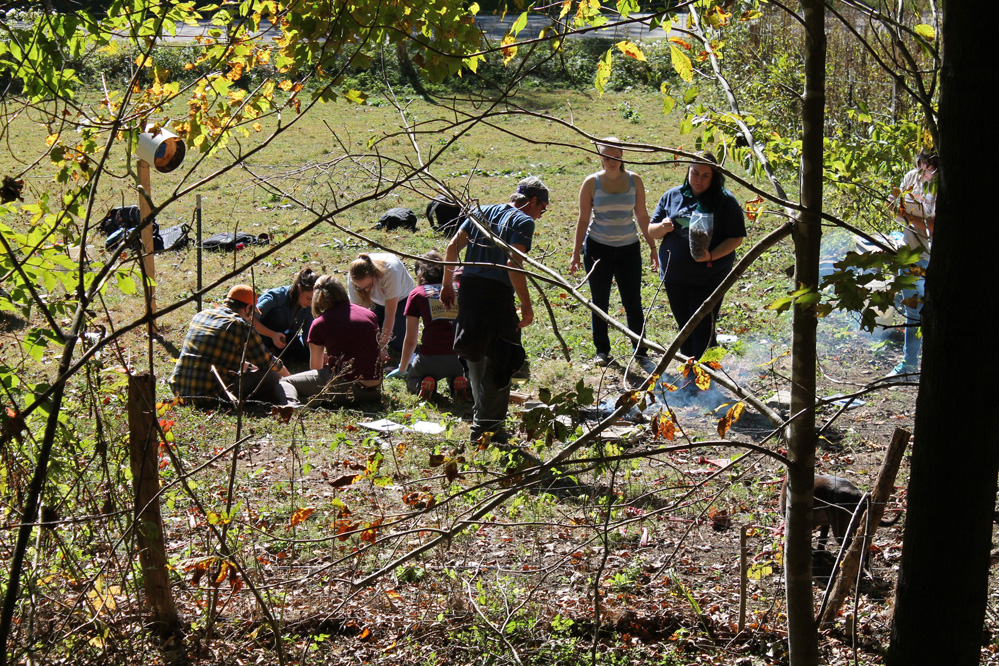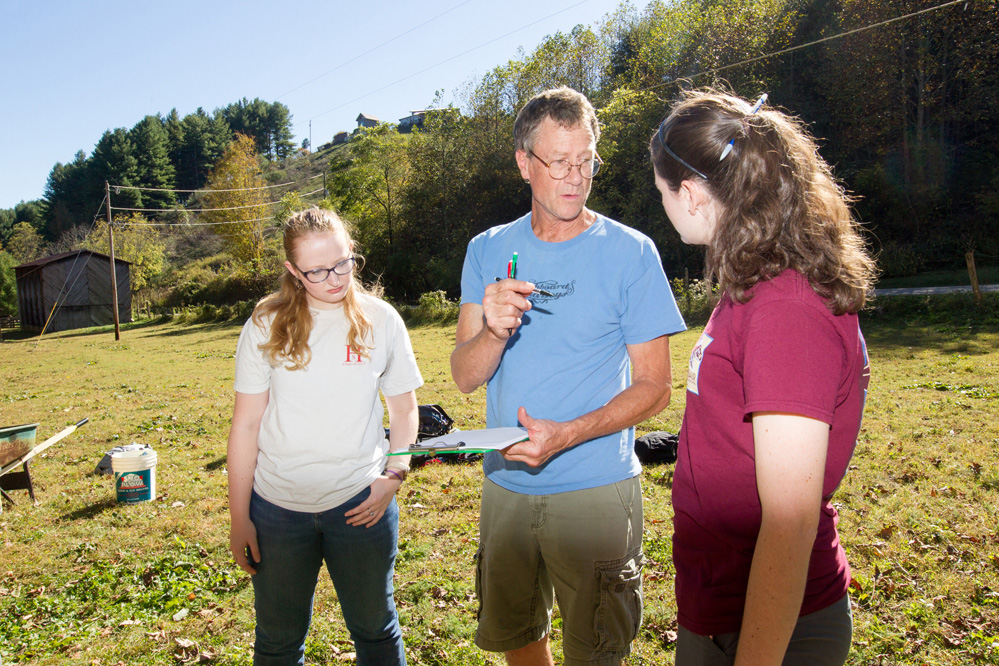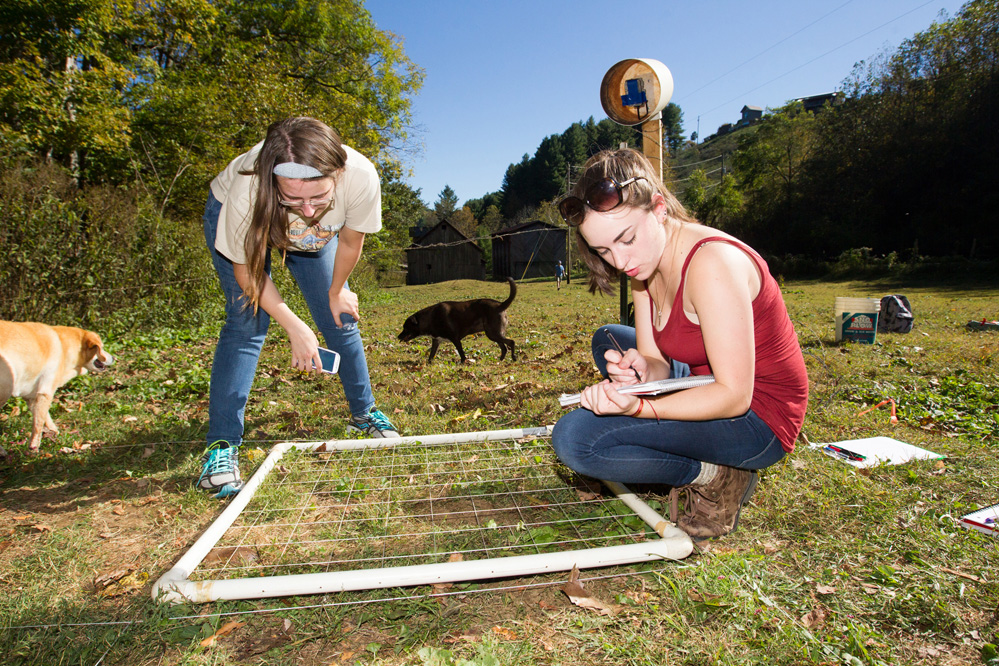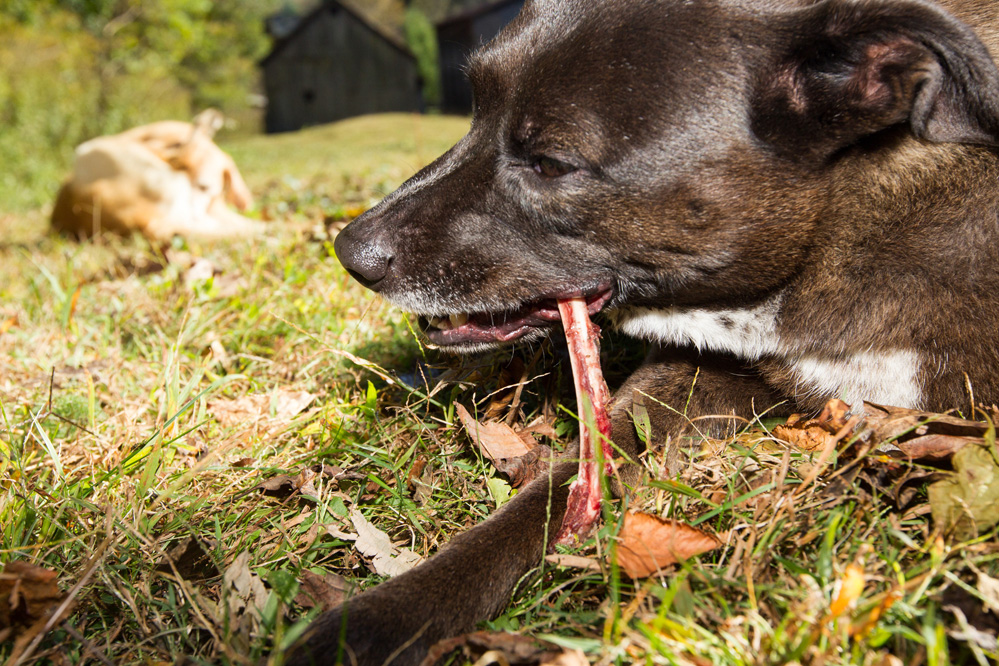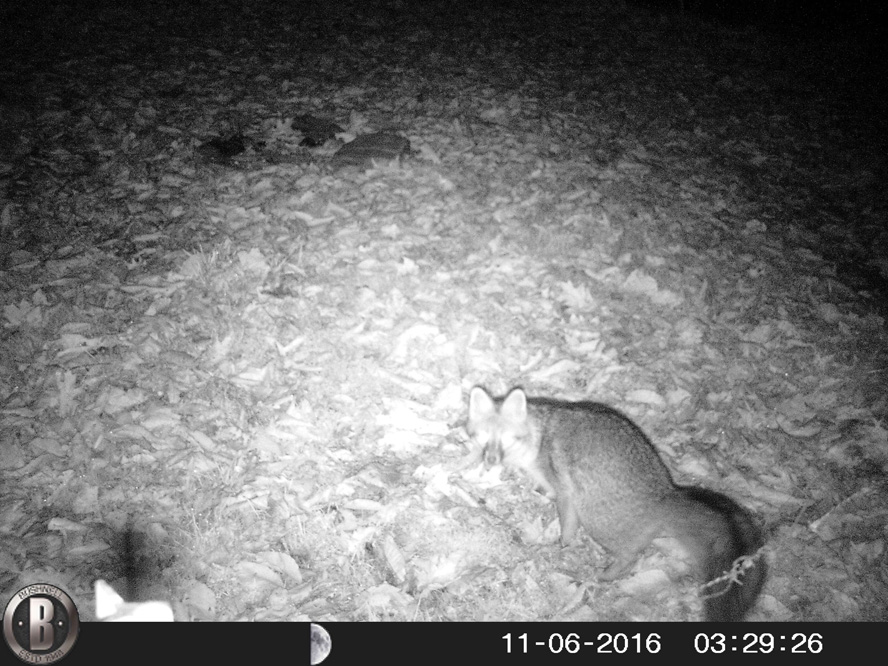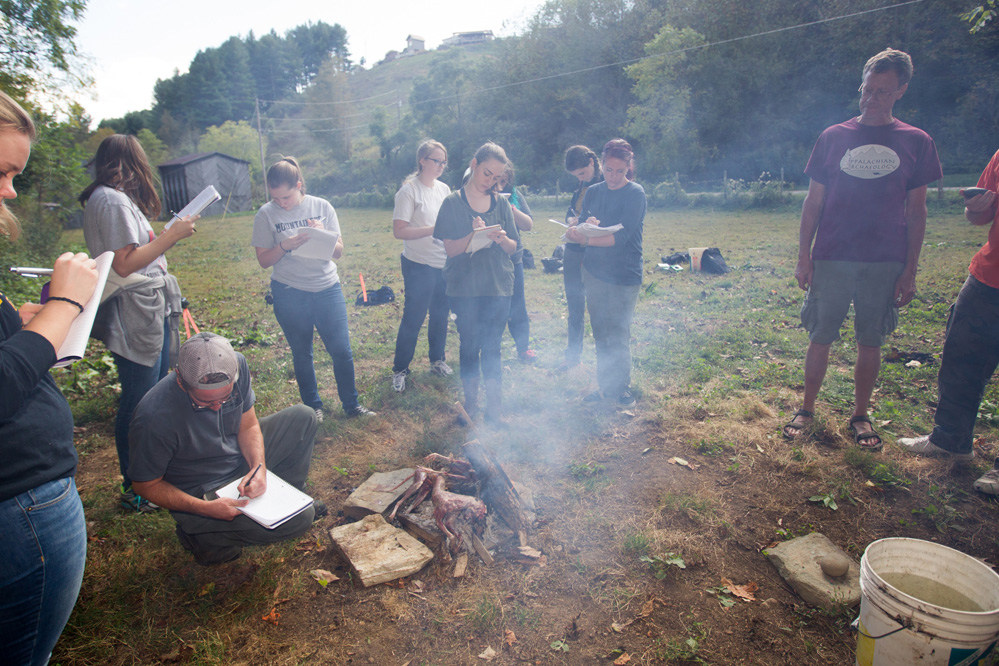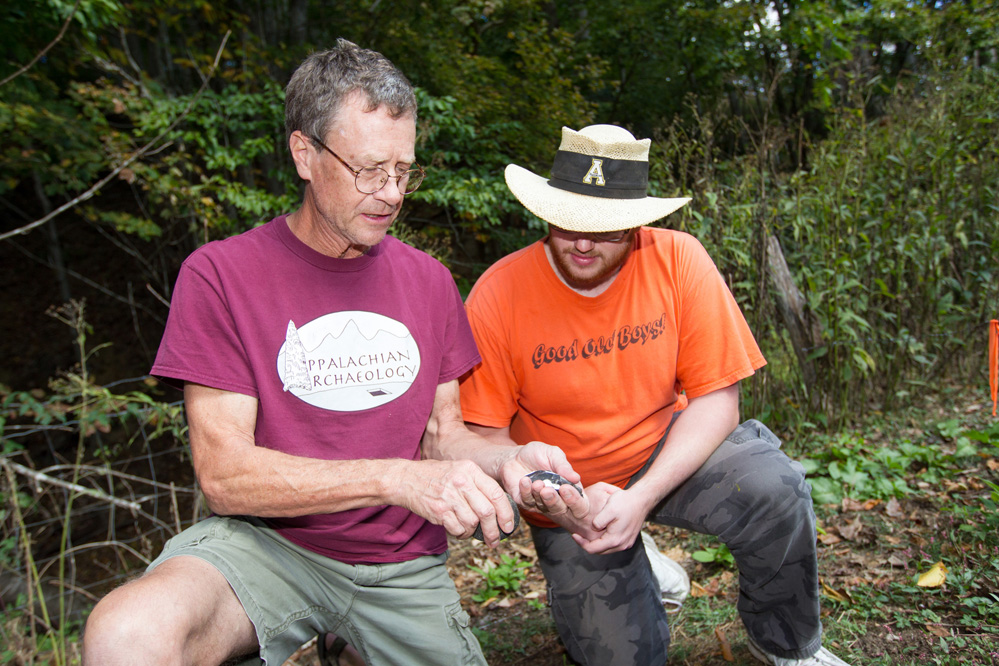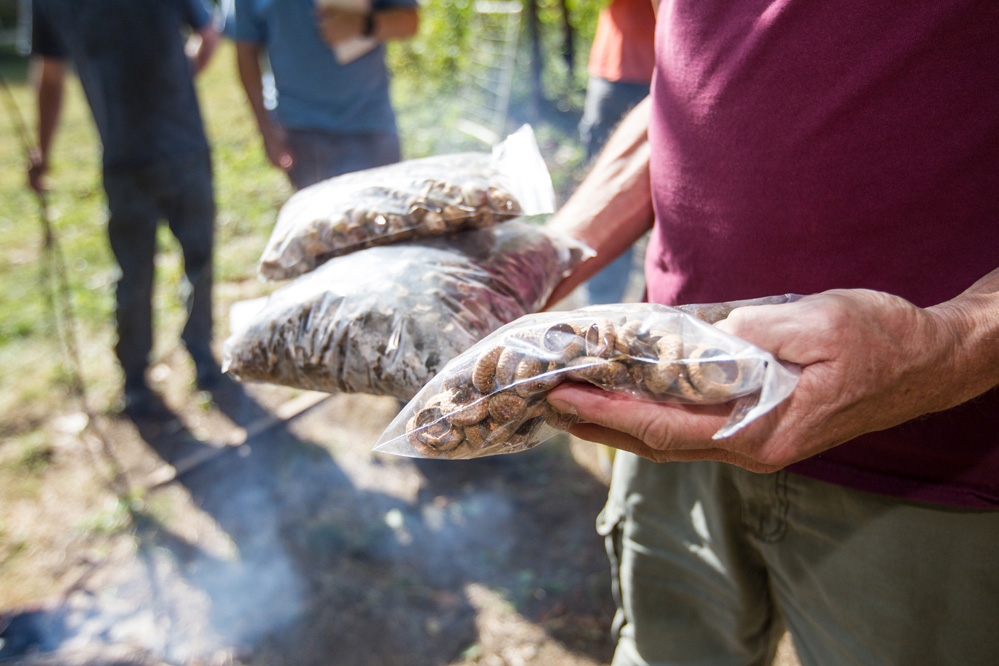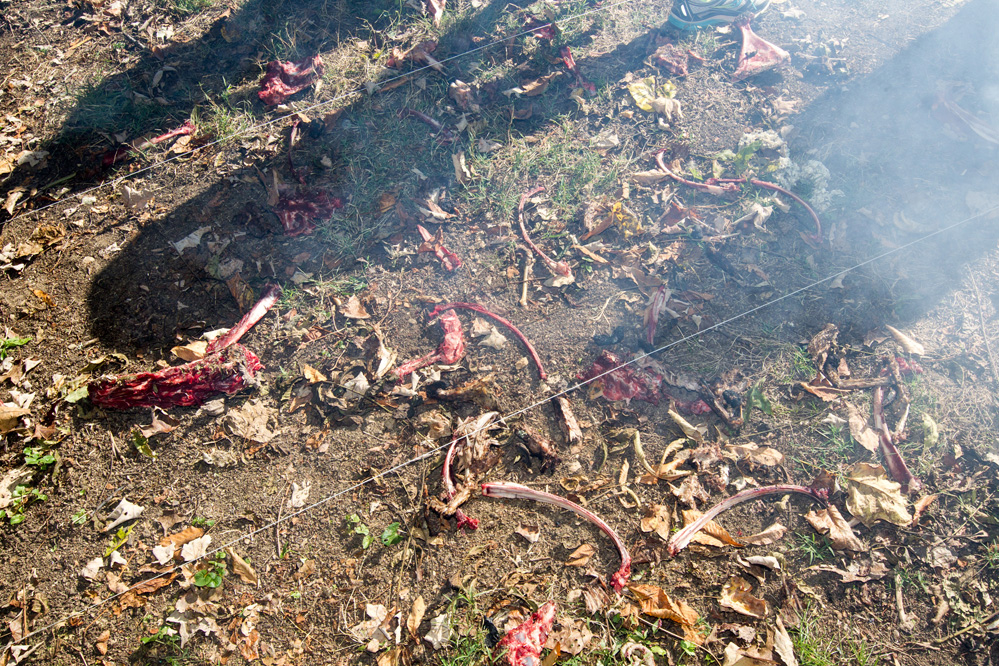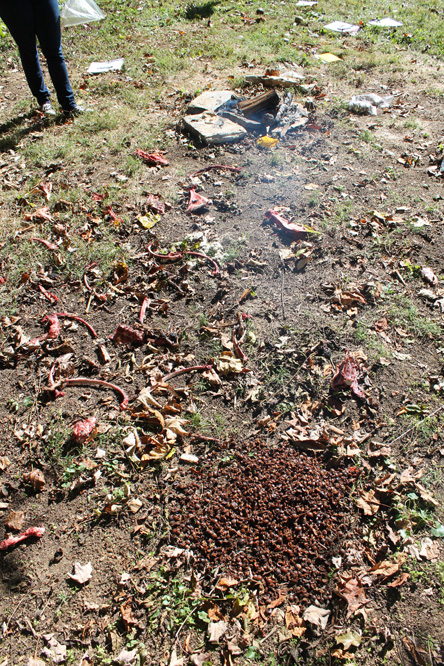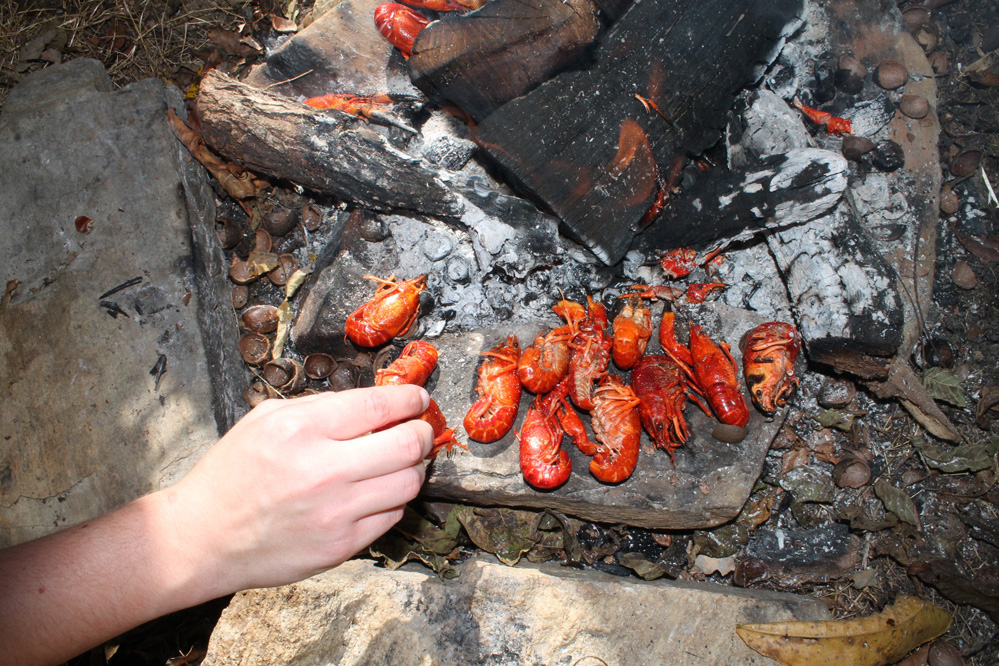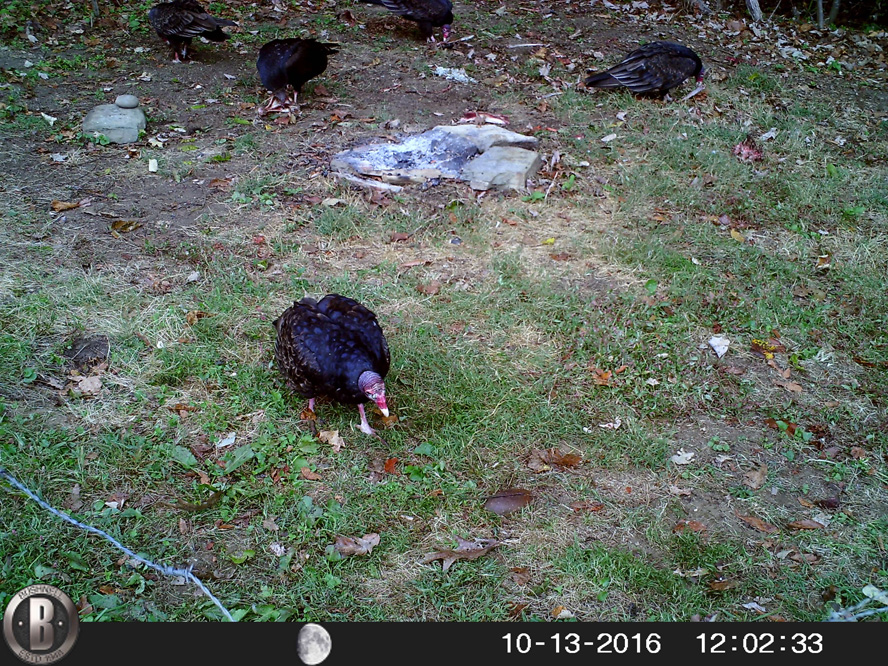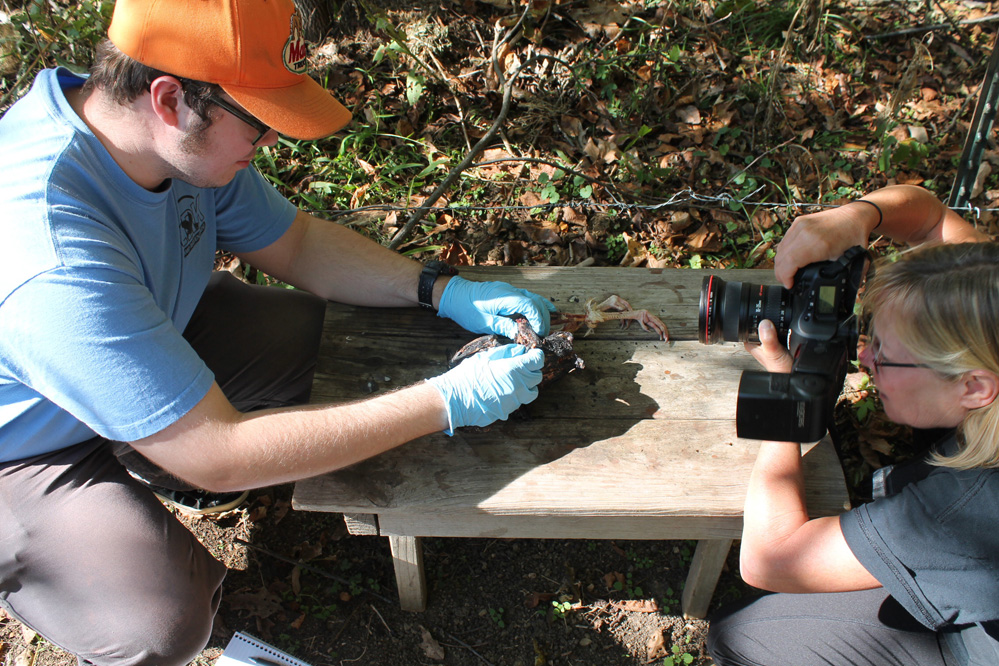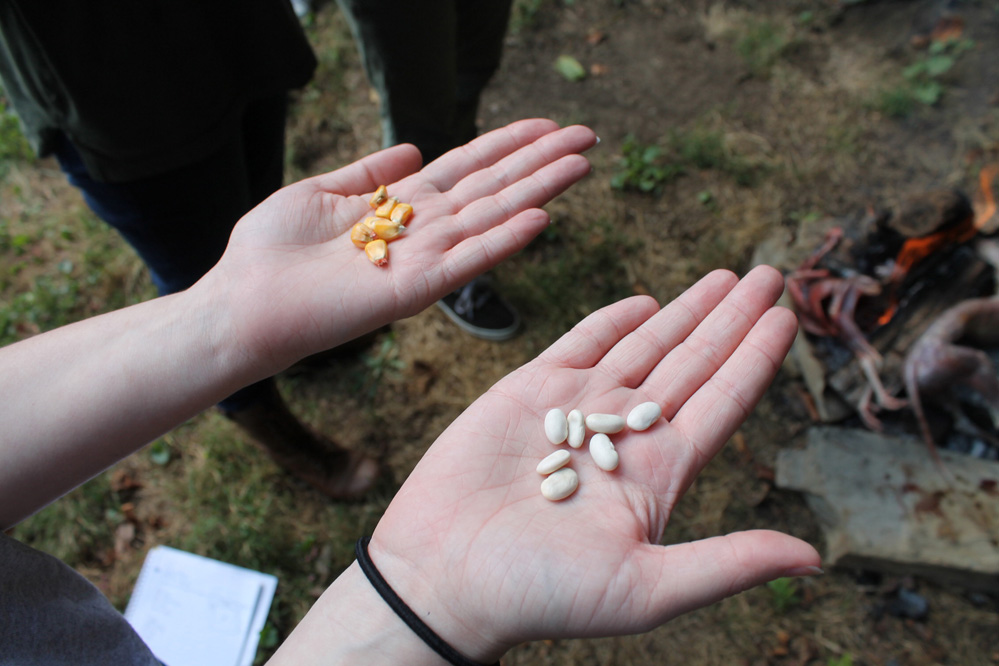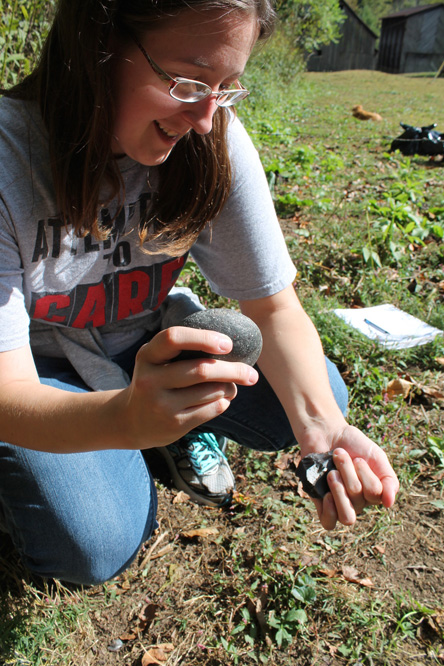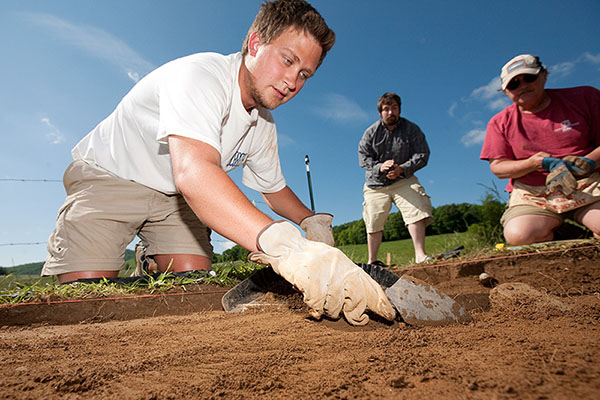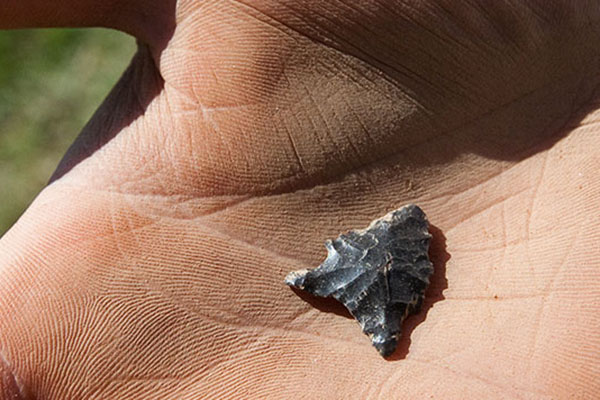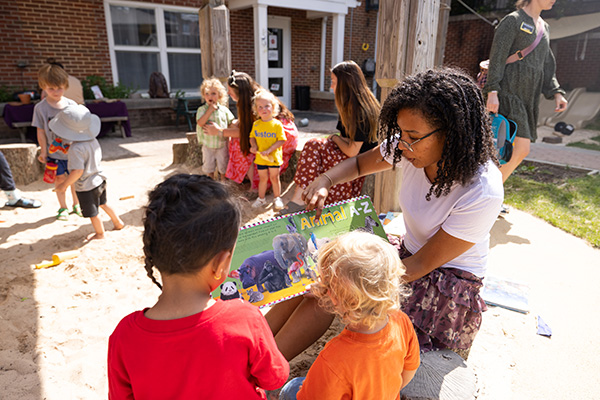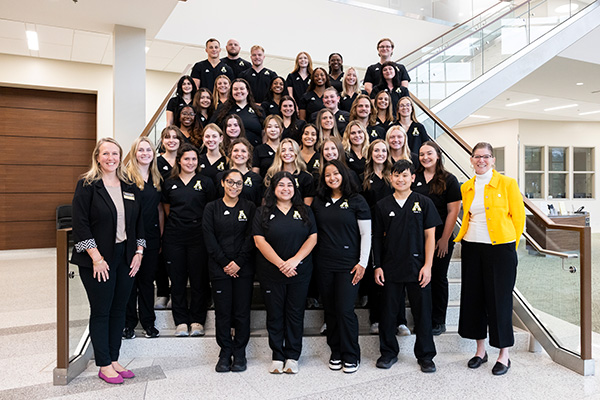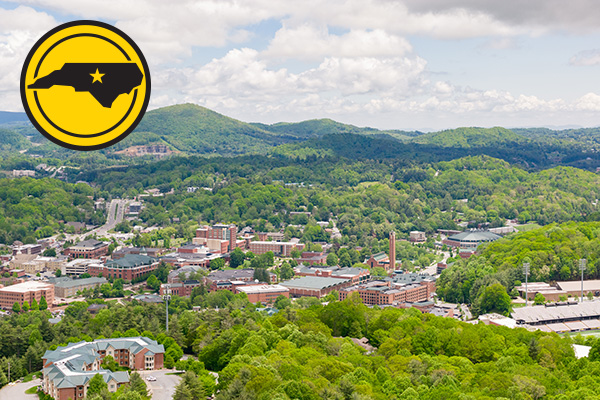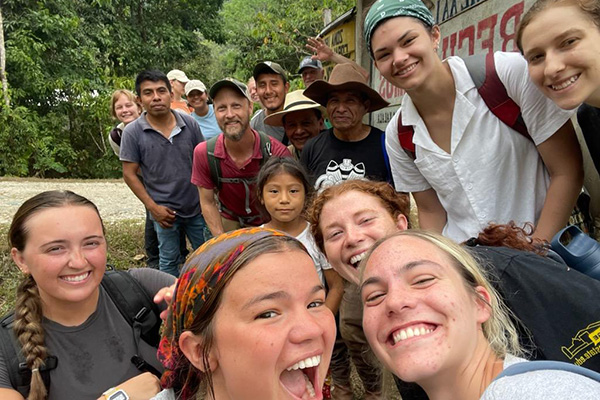If you’re a student in Dr. Tom Whyte’s archaeology class, prepare to get your hands dirty. Cooked roadkill, flint-chipping kind of dirty.
Whyte is no armchair archeologist – experiential learning plays a significant role in his job shaping future archeologists. This fall, to sharpen students’ critical thinking skills he had his senior-level Experimental Archaeology class create an actual hunter-gatherer campsite, abandon it and watch how nature impacts the space. They also predicted future changes.
The impetus: As a scholar, Whyte said he’s often been dissatisfied with peers who make assumptions about relationships between food remains recovered at an archaeological site and what people may have actually eaten or left behind.
“What was preserved in the ground is only a sample of what was deposited by the people there hundreds of years ago,” Whyte said. “Sometimes they would hunt far-afield and only bring the meat back to a site, no bones. Or they might filet a fish and throw the bones back into the river.” When scholars conclude the make-up of pre-historic diets based on the food remains found at a site, they could be off base, Whyte said. He calls that type of research “nonscience.”
However, by creating a campsite and then documenting the variables that disturb it – such as scavengers and weather – students can learn to appreciate some of the many unknown parts of a story. That, Whyte said, can make them better scientists.
Learning in the countryside, not just the classroom
The setting: Whyte’s farm in rural Watauga County, about 15 minutes from campus. “It’s a typical place where you might find a hunter-gatherer campsite next to a creek in the mountains here, maybe a fall season campsite where people might have camped out for a few days and left their garbage behind and moved on,” the professor explained.
For three class periods, the 11 students in the Experimental Archaeology course “camped” in a 5-by-5-meter area on Whyte’s property, assuming the identity of a fictitious tribe of the 1300s. The students cooked over an open fire, roasted nuts and acorns, and deposited bones and other waste in a garbage toss zone based on what they learned from readings about the region’s inhabitants of that time period. On the menu were items scientists understand people of that time would have eaten: fox, squirrel and deer, all of which Whyte had found freshly killed on a roadside, plus an ailing chicken from his own farm to substitute for a wild turkey. There were also snake, crayfish, trout and bass. All had been skinned or prepped by Whyte ahead of the class time. The students tended the fire and took turns making flint tools they would then use to separate the cooked meat from the bones.
Afterward feeding the meat to Whyte's dogs, the students distributed the bones and other waste across the site. They gridded the space to map where the remnants were placed. Then, they set up a motion-sensing camera for a month and documented what took place after they left.
The experiment taught them “not to just assume what I find is completely right,” said Autumn Melby, a junior anthropology major from Sanford. “This is just so much better than sitting in a lecture.”
“This is a fun way to do archaeology,” said Lane Ledford, a senior anthropology major from Morganton. Catherine Allen, a senior anthropology major from Richmond, Virginia, described Whyte as “very engaging… he makes sure it all stays interesting.”
In their final reports for the semester, the students reported an overview of the problem/questions addressed, the experimental materials and methods, results and predictions of what might happen to the campsite in one, 100 and 1,000 years.
Continuing the experiment
The outcome: Whyte’s idea is that in four or five years, another Experimental Archaeology class will revisit the site and make their own interpretations of how the campers used the space and what they ate there.
“I want to have my students excavate this site like real archaeologists, square by square, set up a grid, excavate it, wet-screen all the sediments and then sort out all the bones – and based off what they find, have them retrospectively predict backwards in time what happened there, what was eaten, how it was processed,” he said.
Only after they try to decipher the mystery will these future students be told the details of what this fall’s students actually did at the campsite. He also plans to have professional archaeobotanists and zooarchaeologists study the remains and attempt to reconstruct the diets and food-related activities that took place on the site. Whyte predicts those future students and scientists may be off mark because “they’re only going to find some of the stuff, they’re going to find it in places where we didn't deposit it, and they’re going to find things that we didn’t put in there, there will be things added to the deposits, animals dying, acorns falling off of trees, whatever…The students’ grades won’t be dependent on how accurate they are but how well they go through the process of trying to figure it out.
“My goal is to make them better archeologists,” Whyte said. “It’s good analytical and critical skills I’m after.”
More photos from Dr. Tom Whyte’s Experimental Archaeology course at Appalachian.
What do you think?
Share your feedback on this story.
Related links
About the Department of Anthropology
The Department of Anthropology offers a comparative and holistic approach to the study of the human experience. The anthropological perspective provides a broad understanding of the origins as well as the meaning of physical and cultural diversity in the world — past, present and future. Learn more at https://anthro.appstate.edu.
About the College of Arts and Sciences
The College of Arts and Sciences (CAS) at Appalachian State University is home to 17 academic departments, two centers and one residential college. These units span the humanities and the social, mathematical and natural sciences. CAS aims to develop a distinctive identity built upon our university's strengths, traditions and locations. The college’s values lie not only in service to the university and local community, but through inspiring, training, educating and sustaining the development of its students as global citizens. More than 6,800 student majors are enrolled in the college. As the college is also largely responsible for implementing App State’s general education curriculum, it is heavily involved in the education of all students at the university, including those pursuing majors in other colleges. Learn more at https://cas.appstate.edu.
About Appalachian State University
As a premier public institution, Appalachian State University prepares students to lead purposeful lives. App State is one of 17 campuses in the University of North Carolina System, with a national reputation for innovative teaching and opening access to a high-quality, cost-effective education. The university enrolls more than 21,000 students, has a low student-to-faculty ratio and offers more than 150 undergraduate and 80 graduate majors at its Boone and Hickory campuses and through App State Online. Learn more at https://www.appstate.edu.
